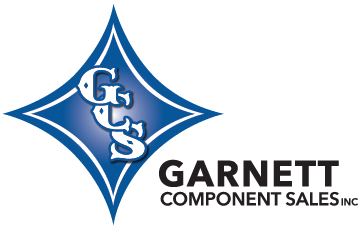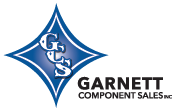Temperature issues during PCB assembly can wipe out a solid production run fast. If heat rises too much, stays too low, or bounces up and down without warning, you’re left with problems that don’t always show up right away. The right temperature helps solder joints hold strong, keeps board components stable, and ensures electronics function the way they should once they’re in use. When that balance is off, even just slightly, quality takes a hit.
Common signs like warped boards, bad soldering joints, or components pulling away from the PCB often link back to some type of heat imbalance. Maybe it’s a cooling system that isn’t doing its job, or different areas on the line heating unevenly. Whatever the reason, these problems don’t fix themselves. Catching and correcting temperature-related issues early helps keep your production stable and cuts down on costly waste or repairs.
Understanding Temperature-Related Issues in PCB Assembly
Temperature controls nearly every step in PCB assembly. From preheat stages to final reflow soldering, the right amount of heat—not more or less—is key to a good result. Changes in temperature shape how materials behave, how clean solder joints turn out, and how long a board holds up once it’s in operation.
When temperature fluctuates outside the preferred range, here’s what often happens:
– Thermal stress: Rapid changes in heat can cause board materials or components to expand and shrink quickly. This leads to internal stress and tiny cracks that could fail down the line.
– Warping: Uneven heating can make boards bend or twist. This throws off alignment and can damage both the board and its mounted parts.
– Soldering defects: Poor heat management often results in weak or cold solder joints. These might look okay at first, but won’t hold up under vibration or extended use.
For example, if one side of a board is exposed to a hotter zone during soldering while the other remains cooler, you’ll likely see uneven joints or misaligned components. Both weaken function and reliability. Bad heat zoning or a clogged fan can easily cause this kind of problem.
Sticking to a steady heat profile helps avoid these problems from the start. PCB materials are sensitive to both sharp temperature swings and long periods at high heat. Monitoring and adjusting the heat flow along the line may seem minor, but it’s one of the easiest ways to prevent failure later on.
Identifying Root Causes of Temperature Problems
Solving heat-related issues starts with understanding where things go wrong in the process. Don’t just look at the finished product. Pay attention to each step along the way. Every zone that pushes, holds, or removes heat plays a part in how well a board performs when the build is done.
Here are a few ways teams spot and correct temperature issues:
1. Thermal profiling: Use sensors or thermal imaging tools to map out heat levels across the production line. This helps show hot or cold spots that can cause weak joints or stress points.
2. Real-time temperature logs: Monitoring changes during active production gives a clearer view of how the system behaves under load. This is more accurate than a single test sample.
3. Board-level inspection: Look closely at items fresh off the line. Warping and discoloration often signal localized overheating.
4. Temperature probes: Placing sensors in specific locations like reflow ovens or under conveyor belts makes it easier to locate faulty zones or failing vents.
5. Component testing: If certain components are prone to detaching or early failure, it’s worth checking how heat reaches that section of the board during assembly.
The key is combining multiple inspection points. A thermal sensor alone can show hot spots, but pairing it with visual checks or real-time readings creates a better picture of what’s happening. Without accurate measurements, any change becomes a guessing game.
Being proactive helps reduce scrap before it multiplies. Once heat issues are understood and tracked, production becomes less about snags and more about smooth, consistent output.
Effective Solutions for Temperature Management
Keeping temperature steady throughout the PCB assembly line takes more than just adjusting oven settings or turning up the air conditioning. A layered approach works best. That includes smart setup, routine checks, and reliable temperature control.
Start with the space itself. The room where PCBs are assembled should have good air circulation. That means a controlled environment with even airflow to prevent hot spots or cold corners. Line placement matters too. Machines that produce heat should be spaced properly and not overload one side of the room. Poor layout often leads to uneven heating before the board even enters the soldering stage.
Clean and functional HVAC systems help maintain the right climate as well. Clogged filters or broken fans cause heat buildup fast, even in cooler weather. Regular checks can catch small problems before they affect production. Duct positions should direct airflow evenly to avoid blowing cold air directly on one part of the process while leaving others warm.
Temperature control tools also play a role:
– Automated reflow ovens with zone controls
– Onboard heating elements in workstations
– Closed-loop cooling systems for high-temp machines
– Heat shields or insulators where needed to block stray heat
When installed and balanced well, these tools work together to keep the entire line stable. That leads to fewer defects and more consistent output. Investing in monitoring tech that logs temperature in real time can also alert teams to small shifts before they become serious issues. For example, if a cooling fan starts losing efficiency, live tracking can catch the change before performance drops.
Across the board, fast corrections mean less downtime. You won’t always need to stop production completely when something goes off. It’s about reacting at the right time with the right fix.
The Role of an Electromechanical Solutions Provider
Managing heat across an assembly line gets more complicated as the line gets longer, the boards get more advanced, or the components get more heat-sensitive. When it gets beyond standard fixes, that’s when it helps to lean on a knowledgeable partner who’s worked with that kind of setup before.
An experienced electromechanical solutions provider can step in with a fresh view. They don’t just look at one piece of the puzzle. Instead, they want to understand how it all works together from design and parts to production and inspection. And more often than not, they find solutions most teams working inside the process every day might miss.
Here’s what a provider can typically bring to the table:
– Help auditing current heat control strategies across the line
– Recommendations for upgraded HVAC layouts or zoning tweaks
– Suggestions on better thermal materials for shielding or insulation
– Pairing cooling fans or temperature monitoring systems with control software
– Helping connect data points like heat logs and defect rates
Let’s say a team is noticing frequent soldering issues on one machine. Instead of replacing the whole unit right away, a provider might point out a better heat sink design to reduce localized overheating or offer software that alerts when peak temps go above safe limits. These small interventions can prevent full replacements and backed-up production.
Working with someone who understands components and manufacturing in equal parts is what separates quick patches from true long-term fixes. And when production gets more advanced, having the right help nearby means you’re less likely to face unexpected delays or expensive rework.
Why Temperature Control Pays Off Over Time
Once your production line starts meeting temperature goals regularly, fewer defects start showing up. Boards last longer, joints perform better under pressure, and customer issues tied back to assembly flaws start dropping.
But long-term success takes more than today’s improvements. It means checking in often, refreshing your temperature monitoring strategy, and staying open to small changes. Simple upgrades and pattern tracking can help you stay a step ahead of new issues before they even hit your line.
When you’re ready for more advanced oversight or when the line keeps pushing limits, outside help can bring a new level of control and peace of mind. Getting temperature right doesn’t just protect your process. It supports every product that depends on that board working perfectly the first time.
If you’re looking for better production quality and fewer heat-related issues during PCB assembly, working with a reliable electromechanical solutions provider can make a meaningful difference. At Garnett Component Sales, we’re here to support your team with tools and guidance that help you keep temperatures consistent and your process running smoothly.




